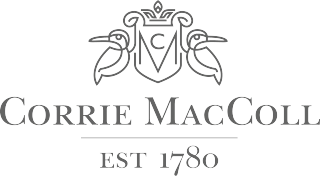Challenges Faced in Waterjet Cutting Rubber Processes and Their Impact on Production Efficiency
Waterjet Cutting Rubber is a highly versatile method used in various industries for precision cutting of rubber materials. However, despite its advantages, there are significant challenges that can impact production efficiency. In this blog, we will delve into the key obstacles faced in the waterjet cutting process, such as issues related to material compatibility, optimal cutting parameters, and the need for specialized equipment. By understanding these challenges, we can explore the reasons why they arise and their effects on production timelines and quality. Ultimately, addressing these complexities is essential not only for improving efficiency but also for enhancing the overall effectiveness of rubber cutting operations. Join us as we uncover the critical factors that influence the success of waterjet cutting in rubber applications.

Identifying Common Challenges in Waterjet Cutting Rubber Applications
In the realm of waterjet cutting, particularly when applied to rubber materials, industries face several challenges that can impact overall production efficiency. One common issue is the difficulty in achieving precise cuts without causing material deformation. Rubber can be sensitive to the heat generated during cutting, leading to a compromised edge quality. According to recent industry reports, maintaining optimal water pressure and cutting speeds is crucial; improper settings can result in excessive wear on nozzles and increased operational costs.
Additionally, the complexity of rubber compositions makes it challenging to find the right combination of abrasive materials for effective cutting. Different types of rubber respond variably to waterjet technologies, which can complicate process standardization. It's reported that over 30% of production delays in rubber waterjet cutting applications stem from equipment adjustments and trial-and-error processes to find the optimal settings.
**Tip:** To enhance efficiency, consider conducting a small-scale test with various rubber types before large-scale production to determine the best parameters for your specific application.
Another challenge is contamination from the rubber itself, which can clog nozzles and affect cutting consistency. Implementing regular maintenance schedules for cleaning and inspecting equipment can significantly reduce downtime related to these issues.
**Tip:** Use high-quality abrasive materials specifically designed for rubber applications; they can improve cut quality and extend the lifespan of your equipment.
Challenges Faced in Waterjet Cutting Rubber Processes
Understanding the Impact of Material Properties on Cutting Performance
 The impact of material properties on waterjet cutting performance is critical in optimizing production efficiency, particularly when working with rubber. Rubber materials exhibit unique characteristics, such as elasticity and varying hardness, which can significantly affect cutting outcomes. For instance, the elastic nature of rubber can lead to deformation during the cutting process, resulting in inaccurate cuts and increased wear on the cutting tool. Moreover, the hardness of rubber affects the required pressure and cutting speed, necessitating careful adjustments to achieve the desired results.
The impact of material properties on waterjet cutting performance is critical in optimizing production efficiency, particularly when working with rubber. Rubber materials exhibit unique characteristics, such as elasticity and varying hardness, which can significantly affect cutting outcomes. For instance, the elastic nature of rubber can lead to deformation during the cutting process, resulting in inaccurate cuts and increased wear on the cutting tool. Moreover, the hardness of rubber affects the required pressure and cutting speed, necessitating careful adjustments to achieve the desired results.
In addition to elasticity and hardness, the thickness and composite composition of rubber also play a crucial role in the cutting performance. Thicker materials require more powerful waterjet systems and careful control of the cutting parameters to ensure clean cuts without excessive material distortion. Furthermore, rubber composites may contain additives that alter their cutting behavior, presenting additional challenges. Understanding these material properties allows manufacturers to tailor their waterjet cutting processes, ensuring optimal efficiency and reducing production downtime caused by tool maintenance or subpar cuts.
Innovative Solutions to Enhance Waterjet Cutting Efficiency
Waterjet cutting has emerged as a popular method for machining rubber due to its precision and versatility. However, challenges such as abrasive wear, slurry management, and cutting speed can hinder production efficiency. According to a report by The Fabricators and Manufacturers Association, up to 30% of operational downtime in waterjet systems can be attributed to maintenance and inefficiencies related to the abrasive materials used in the cutting process. This not only affects the overall productivity but also increases operational costs.

To enhance waterjet cutting efficiency, innovative solutions are being developed. For instance, advancements in ultra-high-pressure pumps can provide a consistent jet stream, significantly improving cutting speed and minimizing wear on components. Additionally, optimizing the abrasive mix and utilizing advanced nozzle designs can lead to a substantial reduction in abrasive consumption, estimated at around 20% savings based on recent industry studies. Implementing these strategies aids in maintaining a more streamlined production process, ultimately leading to higher output and reduced waste.
Strategies for Reducing Waste and Improving Precision in Production
Waterjet cutting has become an essential technique in the manufacturing of rubber components, offering unparalleled versatility and precision. However, the inherent challenges of waterjet cutting rubber—including material distortion and excessive waste—can severely impact production efficiency. According to a report by IBISWorld, the inability to optimize these processes can lead to a productivity decline of up to 15%, highlighting the urgent need for improved strategies in this sector.
One effective approach to minimizing waste and enhancing precision is the incorporation of advanced software for path optimization. Leveraging automation technologies, manufacturers can significantly reduce kerf losses, with studies indicating a possible reduction of scrap material by 25%. Moreover, implementing regular maintenance schedules for waterjet equipment ensures consistent performance, thereby decreasing the likelihood of production errors. A survey by the Water Jet Technology Association further emphasizes that companies that adopt such preventative measures report a 20% boost in overall production efficiency, making these strategies not just beneficial but vital for sustained growth in the rubber manufacturing industry.
Evaluating the Cost-Effectiveness of Enhanced Waterjet Cutting Techniques
In the competitive landscape of manufacturing, evaluating the cost-effectiveness of enhanced waterjet cutting techniques is essential for maintaining production efficiency, particularly in rubber cutting processes. Traditional waterjet systems, while effective, often face challenges such as high operational costs and slow cutting speeds when processing rubber materials. According to a report from the International Journal of Advanced Manufacturing Technology, upgrading to advanced waterjet cutting technology can reduce material wastage by up to 20%, leading to significant savings in production costs over time.
To improve the cost-efficiency of rubber cutting, manufacturers should consider investing in waterjet systems that offer adaptive cutting speeds and better edge quality. These systems can optimize water pressure and streamline the cutting path, ultimately enhancing throughput. The same report highlights that companies implementing advanced cutting techniques have seen their production rates increase by as much as 30%, allowing them to meet tighter deadlines and improve their market responsiveness.
**Tip:** Regular maintenance and calibration of waterjet cutting systems can prevent downtime and ensure optimal performance. Ensure you track wear and tear on the cutting nozzle, as this can significantly impact cutting precision and efficiency.
**Tip:** Consider integrating automation into the waterjet cutting process. Utilizing robotics and CNC technology can further enhance precision and reduce labor costs associated with manual operations.
Related Posts
-

Ultimate Guide to Mastering Ultrasonic Welding Rubber Techniques and Applications
-

China's Resilience in Manufacturing Best Ultrasonic Welding Rubber Amidst US China Tariff Challenges
-

Global Leaders in Best Rubber Processing Proudly Manufacturing in China for the World
-

Exploring the Versatility and Applications of Best Santoprene Rubber in Diverse Industries
-

Future Trends in Best Polybutadiene Rubber Market for 2025 and Beyond
-

Advantages of Utilizing Rubber Processing Techniques for Global Trade

